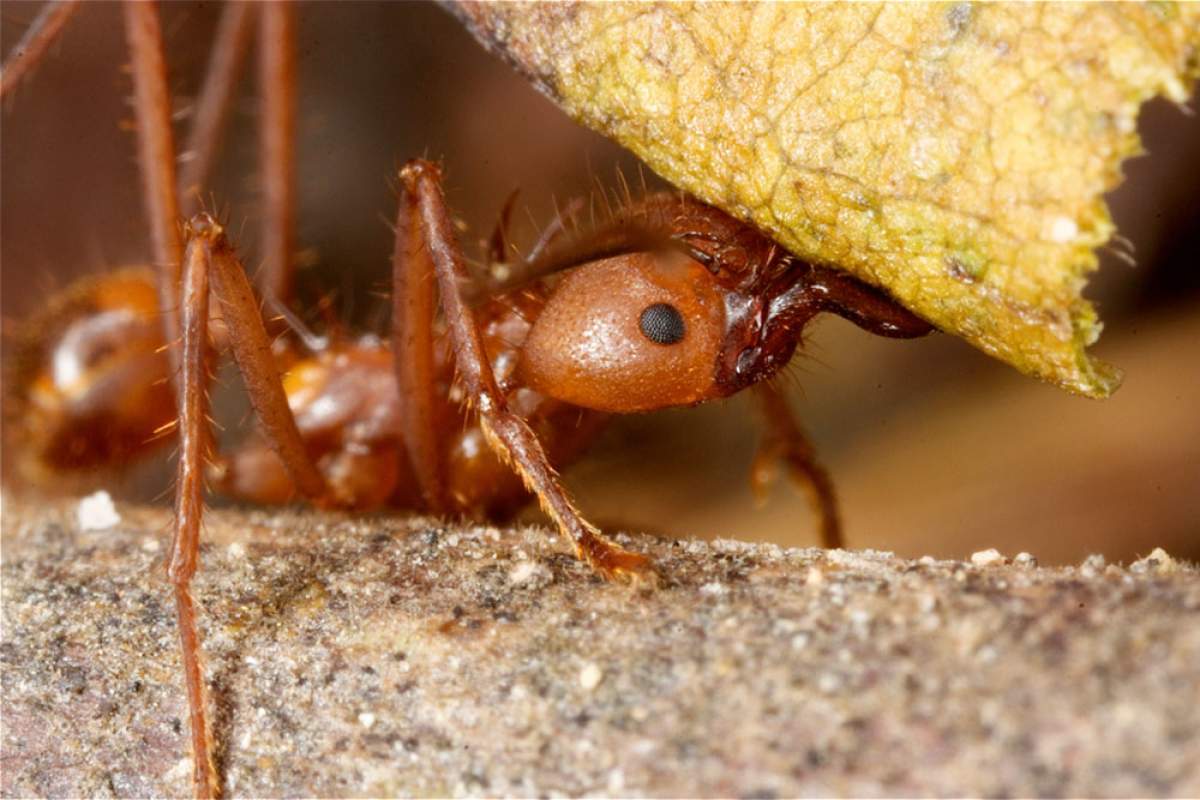
Regular readers and listeners know that leaf cutter ants learned how to farm millions of years before humans.
Tropical leaf cutter ants grow farms of fungus in their nests on an industrial scale rivaling human agriculture. They apply fertilizers in the form of bacteria that provide nitrogen to the fungus. They also use pesticides in the form of antibiotic secreting bacteria that disinfect the fungi of competitors and parasites.
To provide food for the fungi, huge hordes of ants cut leaves to bits, and carry the fragments back to their nests. This agriculture supports colonies of up to eight million individuals. What thousands of years of culture and invention did for humans, millions of years of evolution did for the ants.
Changing Together
In 2016, an international team of researchers published findings on the genetic changes to both ants and fungus that made their partnership possible. This evidence indicates the ants began farming about fifty to sixty-five million years ago, around the time the dinosaurs became extinct.
At first, slow growing fungus could sustain only tiny colonies of ants. Like human plant breeders, the ants selectively cultivated the fungus that best met their needs.
Down the generations, the partnership produced a whole cascade of genetic changes in both ants and the fungus they used. Twenty-five million years ago, a fungus emerged that produced protein‑rich bulbs. This made larger colonies possible, spurring further coevolution of ants and fungus. By fifteen million years ago modern leaf‑cutter ants emerged.
Sources And Further Reading
- Sanne Nygaard, Haofu Hu, Cai Li, Morten Schiøtt, Zhensheng Chen, Zhikai Yang, Qiaolin Xie, Chunyu Ma, Yuan Deng, Rebecca B. Dikow, Christian Rabeling, David R. Nash, William T. Wcislo, Seán G. Brady, Ted R. Schultz, Guojie Zhang, Jacobus J. Boomsma. Reciprocal genomic evolution in the ant–fungus agricultural symbiosis. Nature Communications, 2016; 7: 12233 DOI: 10.1038/NCOMMS12233
- Smithsonian Tropical Research Institute. "After the age of dinosaurs came the age of ant farmers." ScienceDaily. (accessed December 12, 2016)
- Yong, Ed. "How Leafcutter Ants Evolved From Farmers Into Cows." December 27, 2012. Accessed December 12, 2016









